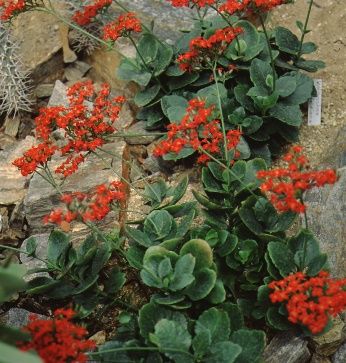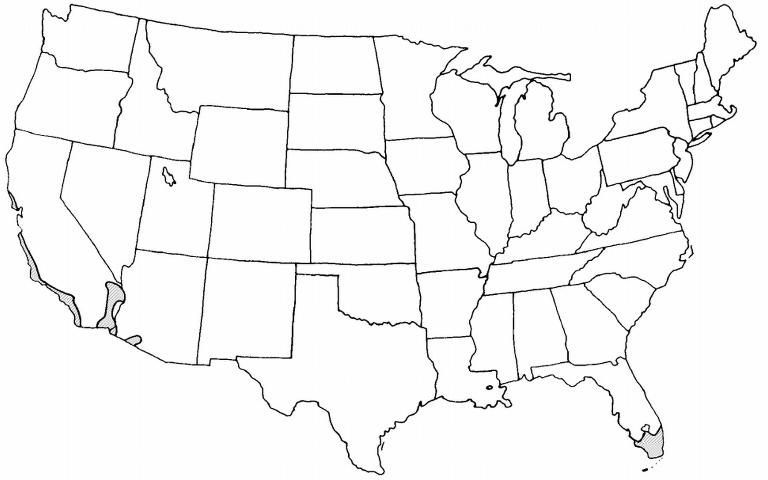Introduction
Kalanchoe is a dark green, succulent perennial with scallop-edged leaves and large umbels of flower clusters held above the foliage. The upright, many-branched growth habit and tolerance of low moisture conditions makes it ideal for groundcover use, rock gardens, raised planters, or containers.

Credit: Edward F. Gilman, UF/IFAS
General Information
Scientific name: Kalanchoe blossfeldiana
Pronunciation: kal-lan-KOE-ee bloss-fel-dee-AY-nuh
Common name(s): kalanchoe, Christmas kalanchoe, Madagascar widow's-thrill
Family: Crassulaceae
Plant type: perennial; herbaceous
USDA hardiness zones: 10 through 11 (Figure 2)
Planting month for zone 7: Jun; Jul
Planting month for zone 8: Jun; Jul
Planting month for zone 9: Jun; Jul; Aug; Sep
Planting month for zone 10 and 11: Feb; Mar; Apr; Sep; Oct; Nov; Dec
Origin: native to Africa
Invasive potential: not considered a problem species at this time and may be recommended by UF/IFAS faculty (reassess in 10 years)
Uses: container or above-ground planter; edging; attracts hummingbirds
Availability: generally available in many areas within its hardiness range

Credit:
Description
Height: 0.5 to 1 feet
Spread: 0.5 to 1 feet
Plant habit: round
Plant density: moderate
Growth rate: slow
Texture: medium
Foliage
Leaf arrangement: opposite/subopposite
Leaf type: simple
Leaf margin: crenate
Leaf shape: oblong
Leaf venation: none, or difficult to see
Leaf type and persistence: not applicable
Leaf blade length: 2 to 4 inches
Leaf color: green
Fall color: not applicable
Fall characteristic: not applicable
Flower
Flower color: pink; red; yellow; salmon
Flower characteristic: winter flowering; spring flowering
Fruit
Fruit shape: unknown
Fruit length: unknown
Fruit cover: dry or hard
Fruit color: unknown
Fruit characteristic: inconspicuous and not showy
Trunk and Branches
Trunk/bark/branches: not applicable
Current year stem/twig color: green
Current year stem/twig thickness: thick
Culture
Light requirement: plant grows in part shade/part sun
Soil tolerances: slightly alkaline; sand; acidic; loam
Drought tolerance: high
Soil salt tolerances: unknown
Plant spacing: 6 to 12 inches
Other
Roots: not applicable
Winter interest: plant has winter interest due to unusual form, nice persistent fruits, showy winter trunk, or winter flowers
Outstanding plant: plant has outstanding ornamental features and could be planted more
Pest resistance: long-term health usually not affected by pests
Use and Management
Growing in full sun to moderate shade, kalanchoe prefers light, sandy, open, well-drained soils and is moderately salt tolerant. Kalanchoe needs very little water and only one light application of fertilizer each year. Plants should be protected from frost. Plant on 8- to 12-inch centers for the best effect.
Flower colors are available in red, yellow, orange, and salmon. The cultivars 'Pumila' and 'Tetra Vulcan' are dwarf selections.
Kalanchoe is easily propagated by seed or leaf, stem, or tip cuttings. New plantlets will occasionally appear at leaf margins and may be removed and potted up individually.
Problems include caterpillars and mealy bugs.
Pests and Diseases
Leaf spotting diseases can be a problem under humid conditions.